Article
Waco, Texas I: Little City, Big Heart
Author(s):
Waco is hardly the most famous place in Texas, but, boy, does it reflect the face of Texas. Little Waco, 22nd in population with only 125,000 souls within its city limits, is the perfect destination to get the feel of this legendary place called Texas.
Texas is vast: 850 miles across by 800 miles top to bottom — so it’s no surprise to find more than 21 cities in this state are larger than Waco in Central Texas.
Waco is hardly the most famous place around, but, boy, does it reflect the face, the popular image of Texas. We have friends in Texas cities who sometimes complain about how outsiders view Texans; “We are more than cowboys, guns and cattle!” they say. “Surely you’ve seen Dallas!”
Well, yes. We stayed once in 1963 at a gorgeous hotel in Dallas owned by Doris Day, which was fascinating, but it hardly gave us the story of this stimulating state. Little Waco, 22nd in population with only 125,000 souls within its city limits, is the perfect destination to get the feel of this legendary place called Texas.
Legendary? Absolutely! How many states were once a republic and singlehandedly fought another country for its freedom? And had a ranch bigger than Rhode Island, and had built a suspension bridge over the Brazos River in 1870 so that cattle on the Chisholm Trail to Wichita, Kansas and on the Shawnee Trail to Abilene could cross more efficiently. Indeed by 1871 more than 600,000 steers had passed over the bridge and in 1970 it was the first edifice in Waco placed on the National Register of Historic Sites. The bridge and its sculptures are conveniently located in front of where we stayed at the Waco Hilton Hotel.
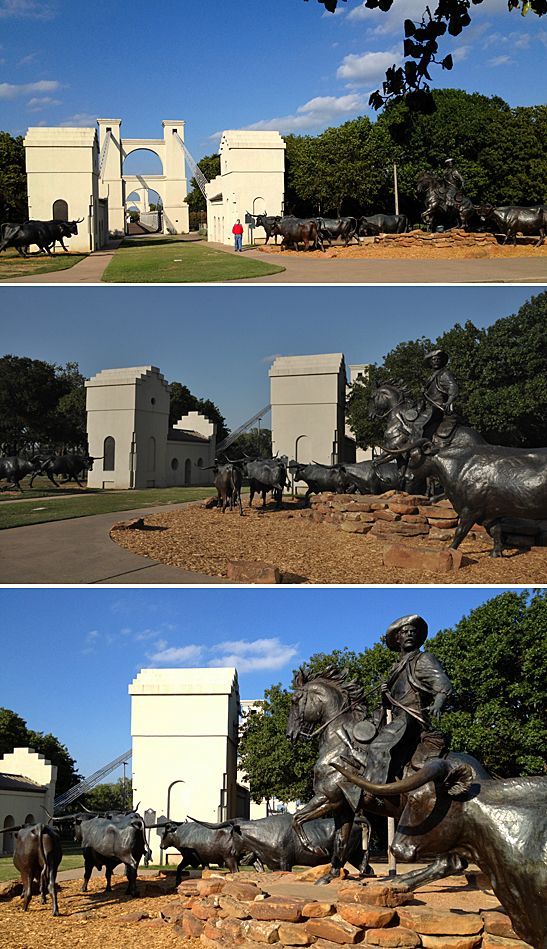
Western sculptor Robert Summers created the Waco Chisholm Trail Heritage Sculpture with a life-sized bronze cowboy and a herd of longhorns. It is the beginning of a more extensive tribute to a cattle trail that finally ended in 1885.
If the Waco Chisholm Trail Heritage Sculpture whets visitors’ appetite for more of the mystique of Texas, then they should make sure their visit coincides with a rodeo event at the Heart O’ Texas Fair & Rodeo in the Extraco Events Center. For the last 60 years the Center’s events have ranged from Elvis to the Beach Boys to — more dramatically — the All American ProRodeo Finals. Five hundred volunteers help to stage those functions, which have helped the Center give more than $1 million in education scholarships to the community.
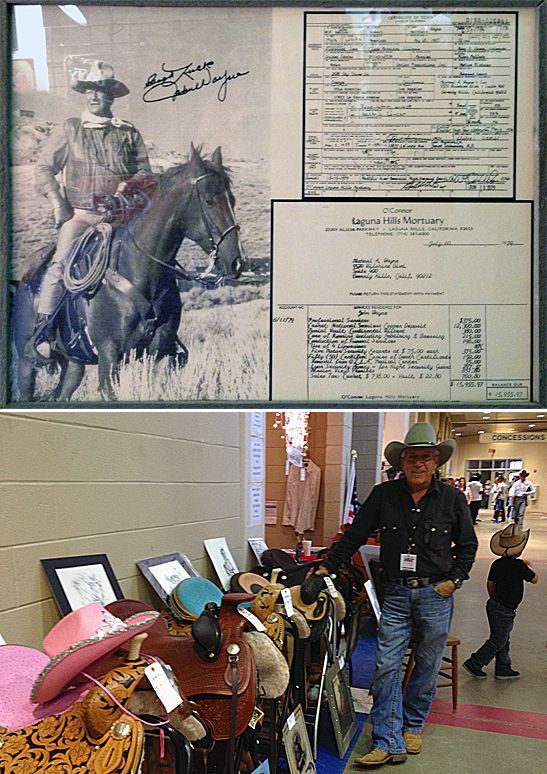
At the 60th anniversary of the Heart O’ Texas Fair and Rodeo we find stores selling items from copies of John Wayne’s death certificate and his mortuary bill ($15,955.97) to some choice, hand-tooled saddles made by Jim Weaver of Lonesome Dove Saddles and Tack. We try to get him to wear one of his pink cowgirl hats for the photograph but with great Texan courtesy he declines.
We have been to rodeos in Deadwood, Wyoming; Huntsville prison, Texas and the Calgary Stampede, but we have never seen an audience having as much fun as this one in Waco.
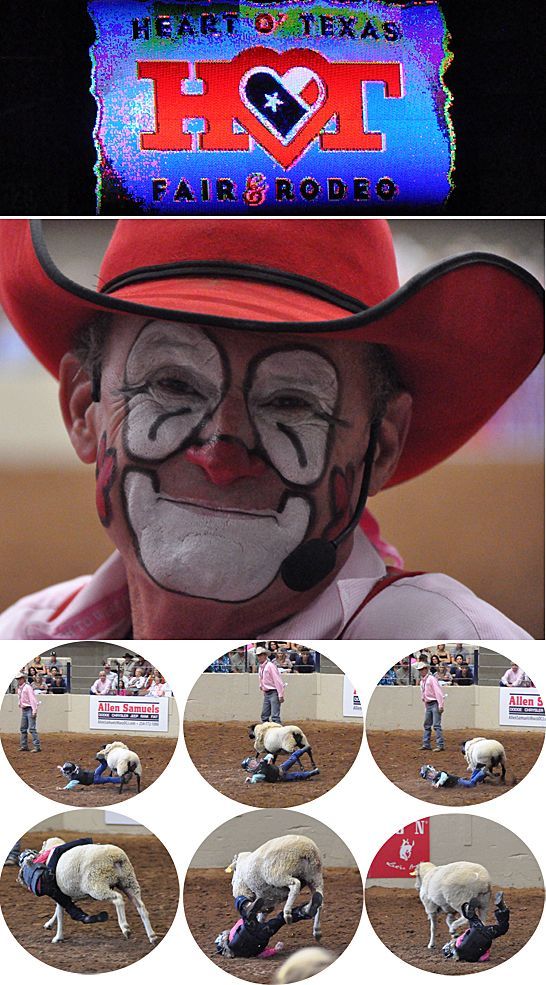
A clown at the rodeo explains it all to us. The Mutton Bustin’ Championship is a crowd favorite. Sheep are loaded into a chute, then children between the ages of four and seven mount them and, with great application, try to hold on to the wool for six seconds to advance to the finals.
More serious are the attempts of those competing in the other events that have prize money: the Tie-Down Roping, the Team Roping, the Steer Wrestling and the Barrel Racing (primarily a rodeo event for women). Then there are foolhardy events for those men who think they are indestructible.
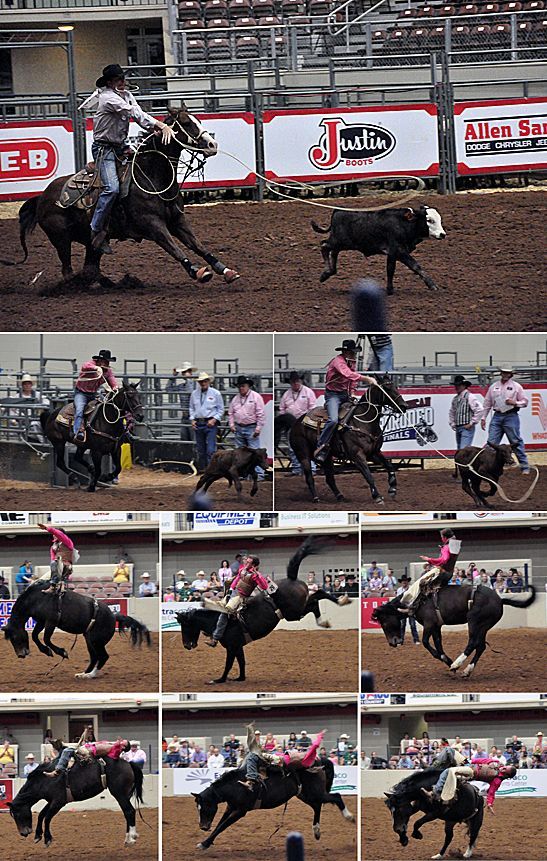
Although city slickers can appreciate the skills in the Tie-Down Roping they cringe more when they see the Bareback Riding, whose riders apparently suffer more injuries than any other rodeo riders. To hold on they have only a rigging like “a suitcase handle attached to a strap” and as they burst from the chute they have to bring both spurs up to the horse’s shoulders — each jump!
So who thought up the idea of bull riding? Presumably bored cowboys on the trail and probably those without families. The bulls weigh a ton and have sharp horns. And the bulls don’t care to be ridden!
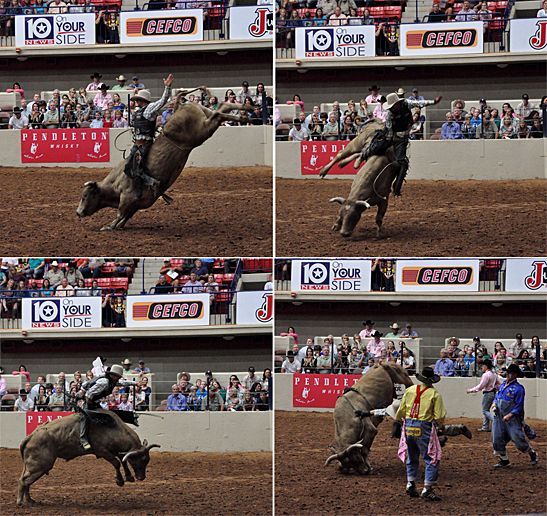
The bull rider has to stay on board this “twisting, bucking mass of muscle” for eight seconds to qualify and is disqualified if he touches the bull or himself with his free hand. Many of the riders wear helmets but it’s a macho performance and others wear only the “protection” of a cowboy hat that is soon flying in the air.
In a city with such a cow-town background it’s no surprise to find great steak houses, but visitors are in a land of immigrants and if they stop and ask for recommendations from the typically outgoing Texans in the street they easily gets suggestions for Mexican and even Italian restaurants.
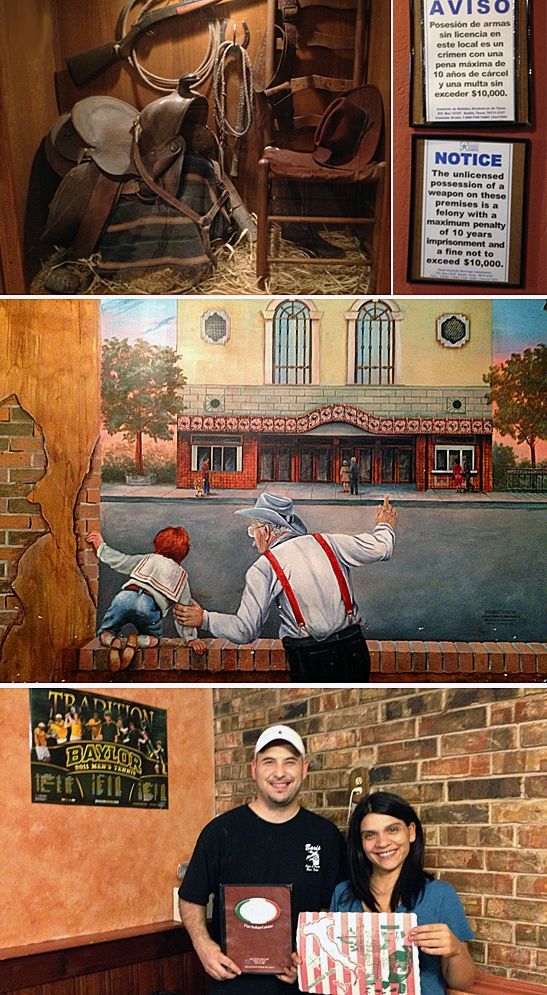
Top image, Diamond Backs; middle, Ninfa’s Mexican restaurant; and bottom picture, young family members at Baris Italian restaurant.
The recommendation we got for Diamond Backs at 217 Mary Avenue was appreciated. The steak was indeed fantastic, but the entrees, by our standards, were expensive (about $35 each). A couple at the next table said we should have come at Happy Hour. The restaurant is very upscale though it does have, as they all do, the warning not to bring unlicensed guns into the restaurant.
A few doors down we find, next night, a great and inexpensive Mexican restaurant called Ninfa’s at 220 3rd Street where our total for a huge meal with tip and margueritas comes to only $40. And on our way to the rodeo we find one of the best Italian restaurants where we’ve ever eaten — Baris at 904 North Valley Mills Drive. Lasagna for $6.25 that melts in your mouth! We pay the bill then stand beside owner Mary Baris waiting to ask her questions while diners walk past saying things like, “Always delicious, Mary,” and to us “Never a bad meal here.”
As we photograph her two children workers in the restaurant we consider the 15 minutes’ drive it took us from our hotel to reach the restaurant and ask the owner, “Do people drive from all over town to eat here?” She replies, “Yes, from Dallas, Fort Worth and Austin!” We believe it.

There are other restaurants where customers didn’t have to drive that far. One in particular came from as close as the nearby military camp: a customer whose endorsement of the eating place is seen in the automobile outside, the picture on the wall and his preferred item on the menu, the Elvis Sandwich. We ordered it from the waitress Raynee to get the image but today’s palates would surely find bananas, peanut butter and bacon an odd mixture. Ours did. So maybe The King is more an authority on American music than on its cuisine.
On the other hand we may have become, to a degree, an authority on Waco’s attractions — including its museums and those are our next two stories.
The Andersons, who live in San Diego, are the resident travel & cruise columnists for Physician's Money Digest. Nancy is a former nursing educator, Eric a retired MD. The one-time president of the NH Academy of Family Practice, Eric is the only physician in the Society of American Travel Writers. He has also written five books, the last called The Man Who Cried Orange: Stories from a Doctor's Life. He lived for four years in Texas in the early 1960s.




